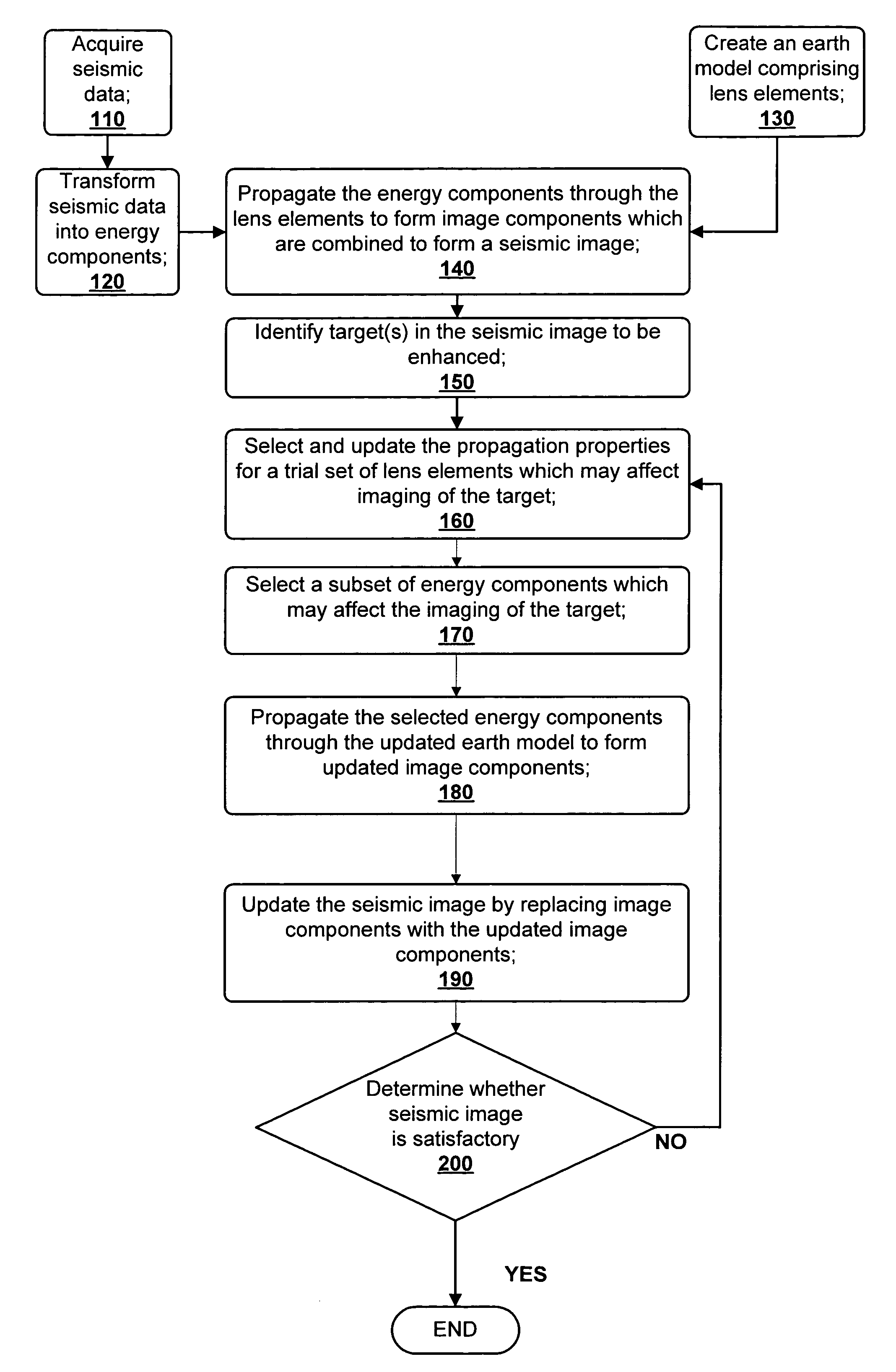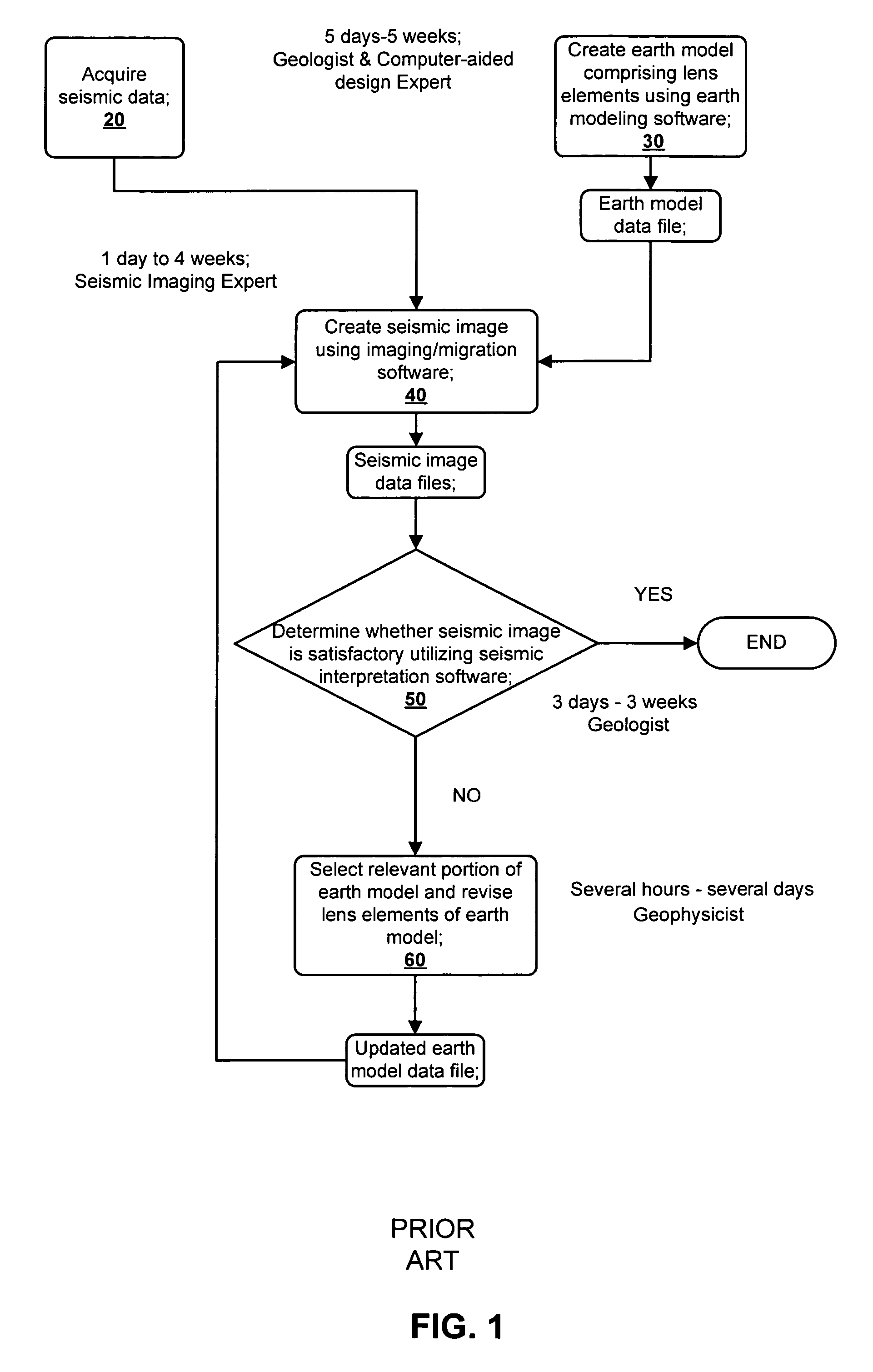Methods for earth modeling and seismic imaging using interactive and selective updating
a technology of seismic imaging and earth modeling, applied in the field of earth modeling and seismic imaging, can solve the problems of affecting the propagation direction of seismic energy, image will not usually be well focused everywhere, and tomography is only appropriate,
- Summary
- Abstract
- Description
- Claims
- Application Information
AI Technical Summary
Benefits of technology
Problems solved by technology
Method used
Image
Examples
Embodiment Construction
[0051]An exemplary and preferred embodiment of a method for creating an enhanced seismic image, made in accordance with the present invention, is shown in FIG. 2. FIGS. 3 and 4 show sub-steps of steps 160 and 170 of FIG. 2. The method concurrently optimizes an earth model along with the seismic image.
[0052]In step 110, seismic data are obtained from a seismic survey of a subterranean region of interest. The seismic data, if so desired, can be organized into data sets which facilitate further analysis. In this exemplary embodiment, the seismic data is organized into common-offset sections (COS). Alternatively, these seismic data may be used in a raw form by using the recorded organization of the seismic data, i.e., common shot gathers. Or else, the seismic data may be organized into other data sets such as common-midpoint gathers or common-receiver data.
[0053]FIG. 5 shows a two-dimensional example of a COS data set, which, for this particular example, happens to be for zero offset. E...
PUM
 Login to View More
Login to View More Abstract
Description
Claims
Application Information
 Login to View More
Login to View More - R&D
- Intellectual Property
- Life Sciences
- Materials
- Tech Scout
- Unparalleled Data Quality
- Higher Quality Content
- 60% Fewer Hallucinations
Browse by: Latest US Patents, China's latest patents, Technical Efficacy Thesaurus, Application Domain, Technology Topic, Popular Technical Reports.
© 2025 PatSnap. All rights reserved.Legal|Privacy policy|Modern Slavery Act Transparency Statement|Sitemap|About US| Contact US: help@patsnap.com



